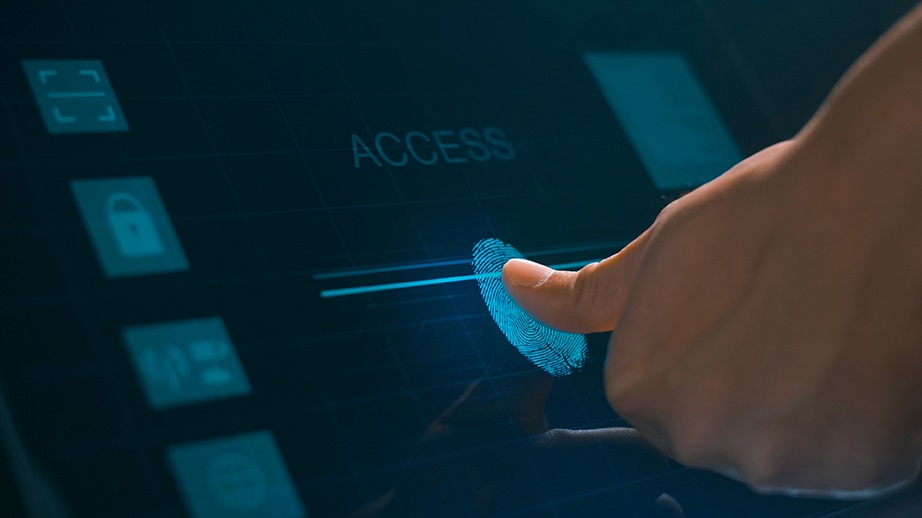
This website uses cookies so that we can provide you with the best user experience possible. Cookie information is stored in your browser and performs functions such as recognising you when you return to our website and helping our team to understand which sections of the website you find most interesting and useful.
Every day more and more users worldwide access their online bank accounts, health or education and subscription services, and even shows and events using their biometric patterns to authenticate their identity.
In fact, a recent report by Reportlinker reveals that the demand for biometric solutions has increased over the past few years as “traditional methods of authentication, like signatures and text-based credentials, have been shown to be more difficult for users to use because they are so vulnerable to contemporary cyberattacks”.
Furthermore, customers need faster methods of authentication as the quantity of digital services is growing at fast pace. As a result, says the report, the global mobile biometrics market is expected to reach $91.9 billion by 2028.
Adding to these facts, the 2022 Digital Identity Services Report reveals that:
Thus, the demand for digital identity services that truly identify users minimizing the threat of identity theft and breaches of private data is on the rise.
But even though projections about the biometric market growth are optimistic, there are still some worries and myths around biometric authentication that prevent some users from adopting it.

Among the most common biometric authentication myths we find:
Reality: Although biometric data is initially extracted from an image, the image itself is not used in the authentication process. The original sample (face, fingerprint, iris) is replaced by a biometric template, which is a mathematical file. This template is a digital reference of the unique patterns found in that initial image.
B-FY’s identification service does not collect or store any biometric data but takes advantage of the biometric identification capabilities of our mobiles along with the biometry that we have already stored in them. Thus, the biometric data of the user always remains under their control.
Reality: The existing regulation is very strict as to when and how biometric information can be collected, and for how long a company can keep this data. Under data protection law, you have the legal right to be informed about how your personal data is being used. Find out how Biometric identification improves UX while complying with the existing regulation.
B-FY’s identification protocol has been designed in accordance with European data privacy directives, taking the utmost care of the user’s privacy and that of the company.
By using the B-FY system to identify their users, our clients integrate our bookstore service into their application. To verify the user’s identity, we only need their email and phone number, so that the device is associated with a single person.
The registration data (phone and email) are stored in a database, which is in a sealed network that is only accessible from the B-FY platform itself.
Reality: Advances in technology mean the cost of biometrics is falling all the time. BYOD strategies, which take advantage of the widely use of smartphones, mean biometric platforms require very little initial investment.
The events industry, for example, is implementing biometrics for registration, ticketing, check–in and on-site consumption at event venues, since it avoids costs associated to registration staff at the event venue, printing tickets or consumption bonusses or wrist-bands.
B-FY is cost-effective solution that prevents economic losses due to security breaches, implementation of hardware, or costs associated to sending text messages (SMS) every time an authentication is needed.
The solution is designed for quick integration and is activated in minutes, without making significant changes to the client’s systems. B-FY Onboard allows companies to use their mobile app as the standard form of identification to access any of the online services and physical facilities they have.
Thus, to make an identification, the client only needs to call B-FY from the access point and, from the user’s app (which starts after reading a temporary QR), B-FYrequests all the user’s interactions and verifies their identity.
Not even close. Password verification accounts for more than 80% of cyber breaches, according to a recent Verizon report. Knowledge factors –i a PIN, a one-time passcode, the answer to a security question, or a username and password – can be guessed, shared, or leaked.
Biometric technology has a much better security performance and high accuracy levels. The healthcare industry, for example, benefits from biometric authentication to avoid mismatches, duplication of records or loss of information critical for the patient’s treatment.
B-FY’s solution does not use any kind of password or combination of user and password. With B-FY, the biometric pattern of a person is associated with the device that they have registered as theirs. Thus, there is no possibility to access a service protected with B-FY by entering a password, as such password does not exist as part of the identification protocol.
Reality: Typing in a password or getting a two-factor authentication code from an application, is substantially more time consuming than using a fingerprint or any other biometric pattern to authenticate.
As 7 in 10 consumers around the world prefer to use biometric verification to passwords when making online transactions, digital financial services worldwide are adopting biometrics to ensure their onboarding process for new customers is thorough, but not too time-consuming.
B-FY is a one-step two factor authentication solution that takes advantage of the combination of two elements: something the person has, their mobile device, and something the person is, their biometric features. It’s also an omnichannel solution which allows to merge physical and digital identification, thus truly identifying people regardless of the way they access a service, whether on site or online.
Do you want to know more? Request a free demo here.